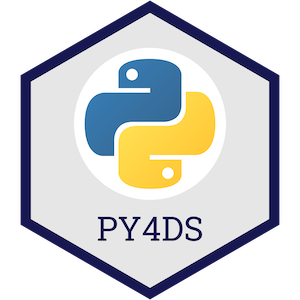
Introduction

This topic material is based on the Python Programming for Data Science book and adapted for our purposes in the course.
Exercise¶
Import numpy under the alias np.
# Your answer here.
Exercise¶
Create the following arrays:
- Create an array of 5 zeros.
- Create an array of 10 ones.
- Create an array of 5 3.141s.
- Create an array of the integers 1 to 20.
- Create a 5 x 5 matrix of ones with a dtype
int.
# Your answer here.
Exercise¶
Use numpy to:
- Create an 3D matrix of 3 x 3 x 3 full of random numbers drawn from a standard normal distribution (hint:
np.random.randn()) - Reshape the above array into shape (27,)
# Your answer here.
Exercise¶
Create an array of 20 linearly spaced numbers between 1 and 10.
# Your answer here.
Exercise¶
Run the following code to create an array of shape 4 x 4 and then use indexing to produce the outputs shown below.
import numpy as np
a = np.arange(1, 26).reshape(5, -1)
20
# Your answer here.
array([[ 9, 10],
[14, 15],
[19, 20],
[24, 25]])
# Your answer here.
array([ 6, 7, 8, 9, 10])
# Your answer here.
array([[11, 12, 13, 14, 15],
[16, 17, 18, 19, 20]])
# Your answer here.
array([[ 8, 9],
[13, 14]])
# Your answer here.
Exercise¶
Calculate the sum of all the numbers in a.
# Your answer here.
Exercise¶
Calculate the sum of each row in a.
# Your answer here.
Exercise¶
Extract all values of a greater than the mean of a (hint: use a boolean mask).
# Your answer here.
Exercise¶
Find the location of the minimum value in the following array b:
np.random.seed(123)
b = np.random.randn(10)
b
# Your answer here.
Exercise¶
Find the location of the maximum value in the following 2D array c (hint: there are many ways to do this question, but a quick search on stackoverflow.com will typically help you find the optimum solution for a problem, for example see post):
np.random.seed(123)
c = np.random.randn(3, 2)
c
# Your answer here.
!jupyter nbconvert _05-py-numpy-practice.ipynb --to html --template classic --output 05-py-numpy-practice.html